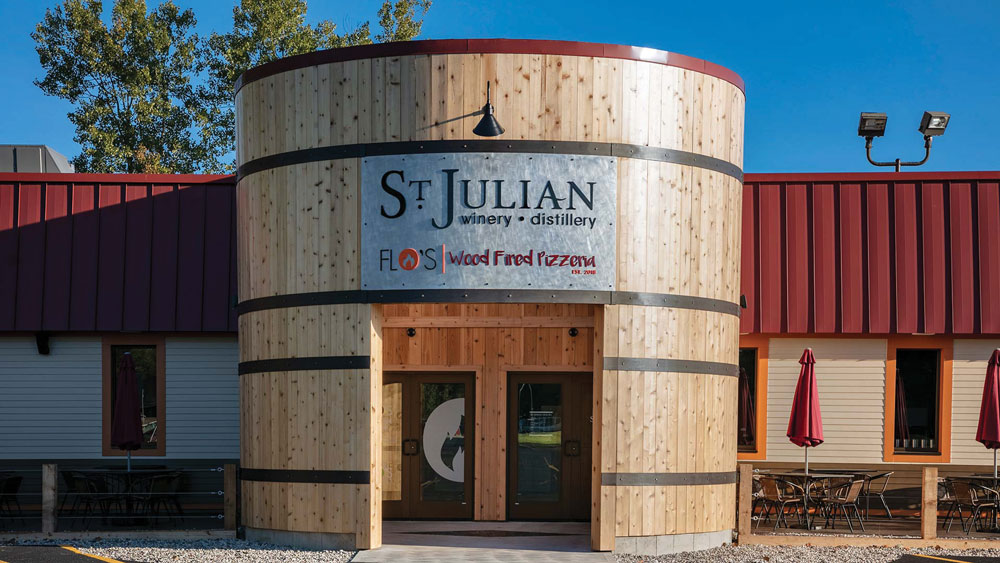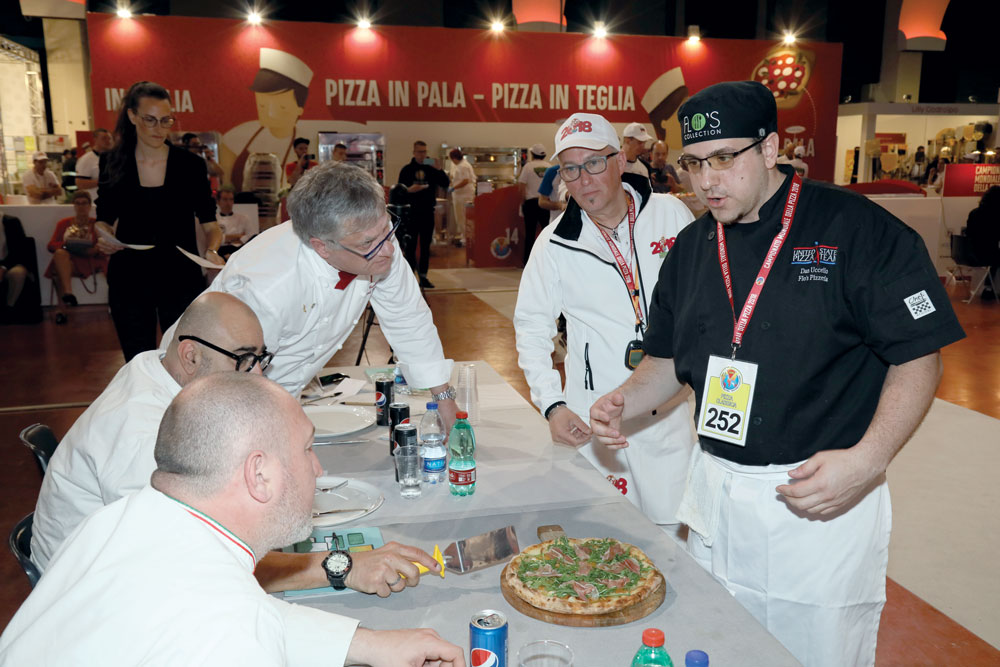In her brief appearance in the Epic of Gilgamesh, Siduri, the Babylonian goddess of wine and beer, warns Gilgamesh not to get lost in the singular focus of his quest and to enjoy all the pleasures of this world. One can’t help wondering if she would have included pizza in that list of pleasures had the story taken place 4,000 years later. As more pizzerias embrace the craft brew scene nationwide, how do you stand out from the crowd and become the hero of your own epic pizza story?
U.S. Pizza Team member Dan Uccello, owner of Flo’s Wood Fired Pizzeria in Rockford, Michigan, decided to break the mold in his local market and teamed up with Michigan’s largest winery, St. Julian. Together, Flo’s and St. Julian offer customers in the Grand Rapids area a unique dining experience that Siduri herself surely would have approved. Here, Uccello offers tips about how and why you should incorporate a wine selection into your pizzeria.
Hernandez: Tell us why you decided to partner up with St. Julian for your next location.
Uccello: I started to see an overabundance of craft brew places in the area, and St. Julian is, in my opinion, one of the best local wineries in Michigan. They are also the largest. We wanted to do something different here, something that paired well with wood-fired pizza, and a lot of their wines really did that for us. We share an entrance with St. Julian, but we’re still two separate entities, so you can choose to go to the winery and order appetizers delivered from Flo’s, or go to Flo’s and get some of St. Julian’s best wines served to your table.

Thanks to sharing a common entrance, Flo’s Wood Fired Pizzeria and St. Julian Winery are natural collaborators.
Hernandez: Is there a profit difference between beer and wine?
Uccello: There is. We run a 22% beer cost and a 27% wine cost. I wouldn’t completely abandon beer. It’s a staple most diners want, but you can focus your energy on promoting, selling and creating a nice environment for wine as well. And, of course, you can get a higher price point on a typical wine pour of 5 ounces than a typical beer of 16 ounces. At the end of the day, wine will send you to the bank with more money if it’s done right. Currently, about 50% of our beverage sales at that location comes from wine. Beer will sell itself. Wine needs a little more effort and knowledge to successfully incorporate into your menu. I encourage you to train your staff on the wines you serve and what they pair with on your menu.
Hernandez: What’s the first thing someone should do when trying to start a wine program?
Uccello: Definitely research the market. Put together a business plan and make sure this concept will even work in your market. The research will tell you what your market share will be, your customer base, how often they go out to eat and important data like that. After that, find out what your average check needs to be. Ours is between $35 and $40. That is based on an appetizer, a pizza and two glasses of wine. When dealing with wine, the best rule of thumb is that the first glass should pay for the bottle of wine. Negotiate a good price on your wines and price them accordingly so that when you sell that first glass from a bottle, the rest is profit.
Hernandez: What’s the secret to pairing wines with pizzas?
Uccello: Everyone is different. We will, of course, tell you what the traditional pairings for wines are, and it can be as simple as a white wine for lighter-topped pies and a nice red for a slice that’s a little heartier. But, at the end of the day, we are in the business of making you happy and will serve you whatever pairing you like. Serving flights of wine is a great way to get the customer involved in figuring out their favorite pairings.
Hernandez: Are flights a cost-effective way to pair wines?
Uccello: Again, if you price them right. It is also a great tool for our customers to learn their own tastes. By the end of the flight, they are usually buying another glass of their favorite or taking a bottle to go. It’s a natural upselling method for the wine.
Hernandez: Can you do a seasonal menu with wine pairings?
Uccello: Absolutely. We add to our set menu every season when ingredients are available. We love running new featured entrées. We also like to do a featured drink with these items, so it becomes something people look forward to, seeing what we have come up with on the culinary side and how we pair it with wines and even other mixed drinks. If you do a seasonal menu, definitely make sure you are also working on the beverage side seasonally as well.
“When dealing with wine, the best rule of thumb is that the first glass should pay for the bottle of wine. Negotiate a good price on your wines and price them accordingly so that when you sell that first glass from a bottle, the rest is profit.”
— Dan Uccello, Flo’s Wood Fired Pizzeria
Hernandez: If someone decides to go the route you took with Flo’s, should they rebrand to a new concept or just incorporate the idea into their existing brand?
Uccello: That’s a tough question. If you are looking to add revenue, you’re probably not doing that well anyway, so you should probably rebrand to the new concept. But if things are going well, why add the headache of creating a whole new brand and getting that marketed? But that’s not true for all cases. Say you own the building next door, with 4,000 square feet sitting empty. That would be a good time to open a differently branded concept. Customers don’t even have to know that you own both. Plus, the foot traffic you might lose from your old concept to your new one stays within the business, but you are also growing a second customer base that you might not have been serving before. If you do choose to partner with a winery or brewery, make sure they have good name recognition. That will help you bring in new customers as well. Again, it’s a situational answer as to whether or not you rebrand completely.
To hear the full interview with more tips from Dan Uccello and learn more about the partnership between Flo’s Wood Fired Pizzeria and St. Julian Winery, visit PMQ.com/uccello.
Brian Hernandez is PMQ’s test chef and U.S. Pizza Team coordinator.














